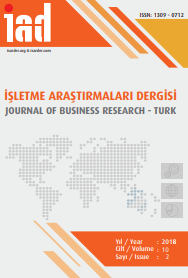Performance Analysis Of Banks In Turkey Using Camels Approach Case Study: Six Turkish Banks During 2005 To 2016
Performance Analysis Of Banks In Turkey Using Camels Approach Case Study: Six Turkish Banks During 2005 To 2016
Author(s): Masoud Ghazavi, Sema BayraktarSubject(s): Methodology and research technology, Evaluation research, Transformation Period (1990 - 2010), Present Times (2010 - today), Financial Markets
Published by: Orhan Sağçolak
Keywords: Banking; Performance Analysis; CAMELS Approach; ANOVA Test; International Rating Agencies;
Summary/Abstract: This study analyzes the performance and financial credibility of six Turkish banks for the period of 2005-2016. The sample comprises two state-owned deposit banks, three private-owned deposit banks, and one foreign bank. As one of the most popular methods for measuring banking performance, CAMELS method is used to analyze the performance of the banks. CAMELS stands for Capital Adequacy, Asset Quality, Management Efficiency, Earning Quality, Liquidity, Sensitivity respectively. When the average rates of 2014, 2015 and 2016 ratios –for each one of these mentioned categories- separately examined, none of the banks is found to be superior to the others. As for the composite rate for CAMELS though, Ziraat Bank has the highest rate (29.32%) and Halkbank stands at the last row (21.94%). Overall, the values of the CAMELS ratios for 2016 seem to be quite close to each other. However, when the yearly analysis is conducted, some significant differences in the categories of CAMELS ratio are observed. In addition, ANOVA test results state that the means of CAMELS ratios are significantly different over the years. Finally, comparison of CAMELS ratings with institutional ratings shows that the latter does lag the financial indicators of the companies and even can be not reflective of the current financial condition of the company. On the other hand, the trends of the institutional ratings and of financial indicators are consistent over a long period of time.
Journal: İşletme Araştırmaları Dergisi
- Issue Year: 10/2018
- Issue No: 2
- Page Range: 847-874
- Page Count: 28
- Language: English

